- 한국어
- English
- 日本語
- 中文
- العربية
- Español
- Français
- Deutsch
- Pусский
- Tiếng Việt
- Indonesian
By Honorary Reporter Cheryl Sun Han Hagen from U.S.
Photos = Cheryl Sun Han Hagen
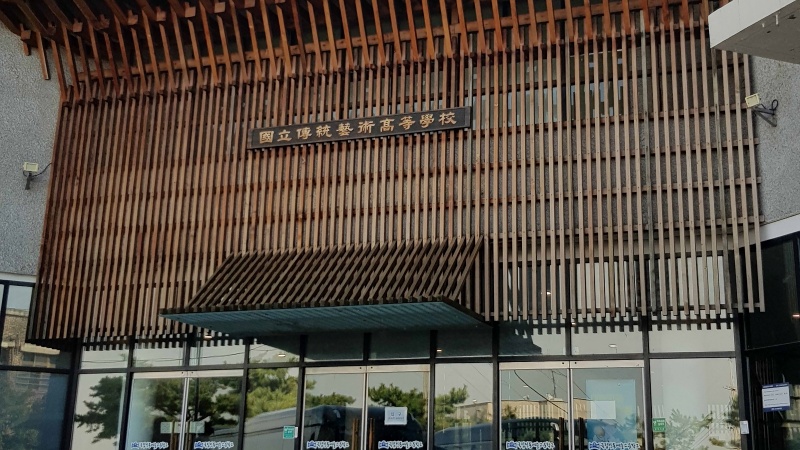
The entrance to the school building
Watching the opening ceremony for the 1988 Seoul Olympic Games led me to become fascinated by Korean traditional music. Driven by this interest, I visited the National Middle and High School of Traditional Korean Arts on Oct. 21, 2022, to conduct an in-person interview with the principal, Wang Gi-cheol, and former student Kim Hee-young. I also had the chance to tour the school and meet some of the staff and students. The students even gave a spontaneous performance of nongak (traditional music performed by farmers).
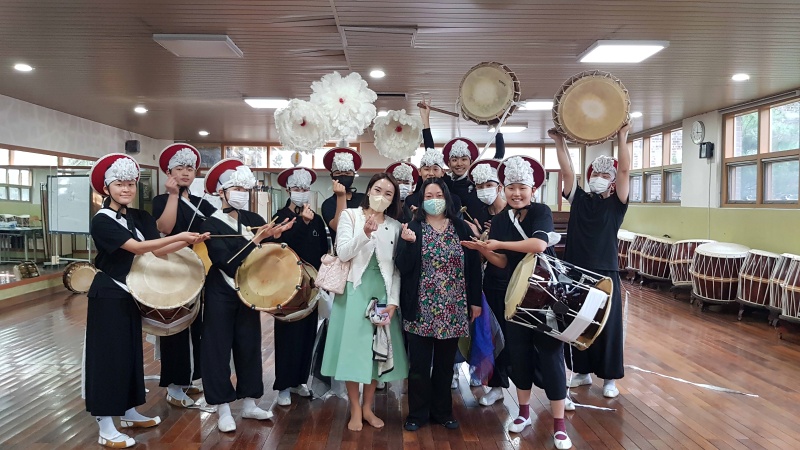
Kim Hee-young and I pose with the students who performed nongak.
The traditional arts school was established in 1960, and is known for shaping performers into artists as well as having a great education system. Students from the school performed at the opening and closing ceremony of the 2018 PyeongChang Winter Olympics, and also at the inauguration ceremony of President Park Geun-hye in 2013. The school takes pride in its country’s traditions and the important role it plays in spreading Hallyu across the world.
Students from all over the country attend the school through scholarships. Most of them are already great performers because they have been practicing their craft since elementary school. The meticulous audition process involves a lot of dedication from the prospective student and the staff.
These are the departments the students can choose from: The Music Department where they practice instruments such as the gayageumong (zither with 25 strings), geomungo (long zither with 6 strings), haegeum (vertical fiddle), daegeum (bamboo flute), piri (flute) and ajaeng (bowed zither with 7 strings). Students may also choose from percussion instruments including the janggu (hourglass-shaped drum), kkwaenggwari (small metal gong), buk (barrel drum) and sogo (small, hand-held drum). Those who wish to study the vocal arts may take pansori (solo lyrical opera), minyo (folksong), byeongchang (singing with instruments) and jeongga (royal music) classes. Students can also major in Music Theory and Composition or Rhythm and the Performing Arts.
To audition for the Music Department, students must perform a traditional palace music solo and a folk music solo. Percussion majors have a joint audition where the students perform together with their instrument of choice. Vocal majors must prepare a piece of pansori.
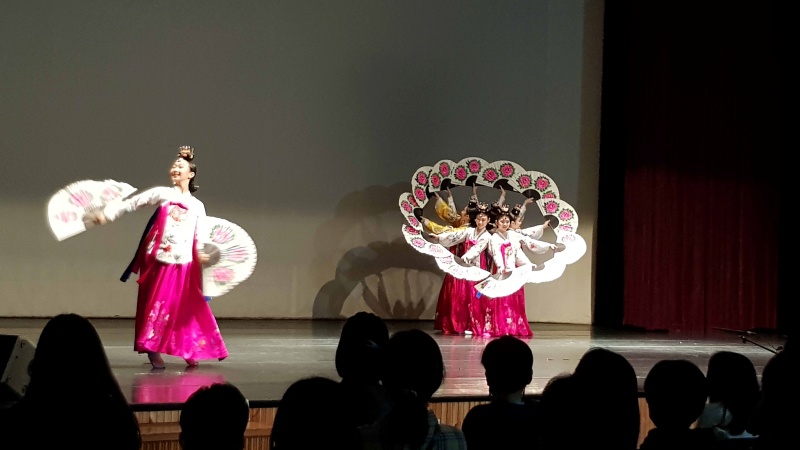
Students perform the Korean folk dance buchaechum.
Finally, the audition for the Music and Drama Department tests students on their singing and acting abilities, as well as how they conduct themselves in interviews. Students enrolled in this department will go on to be the future of Hallyu.
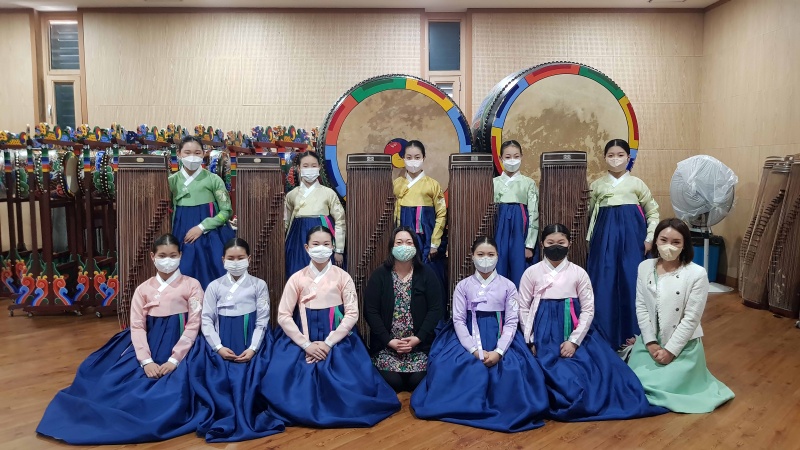
Kim Hee-young and I pose with the performers of gayagum byeongchang.
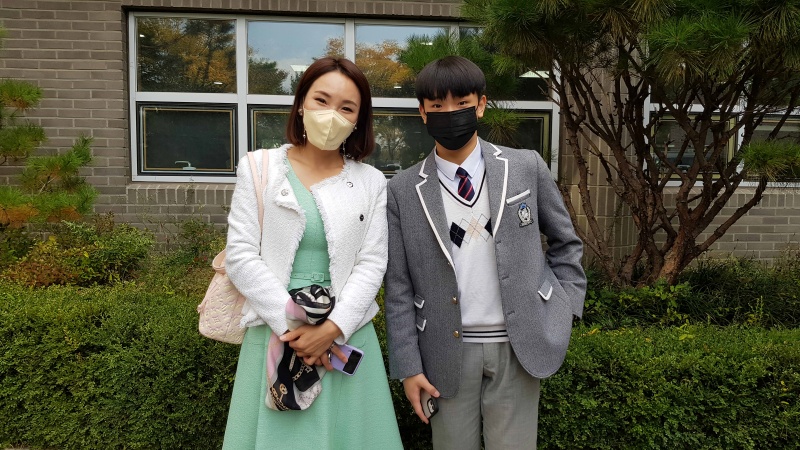
Former student Kim Hee-young and her son, Lee Han-kyul
Kim, the former student, majored in haegeum. After graduating, she went to college in Turkey and studied Turkish rhythm and Zen. In 2002, she graduated from the Korea National University of Arts. Kim said that at first her parents were opposed to her practicing gugak (traditional music), because of the stereotype associating the genre with the lower classes that performed under the influence of the Japanese during colonial times. Now there is a sense of pride in practicing traditional music, thanks to institutions like the school.
Kim remarked that her father is proud of what she has accomplished now that Hallyu is as influential as it is. Her son currently attends her old school, and is in his second year of studying composition.
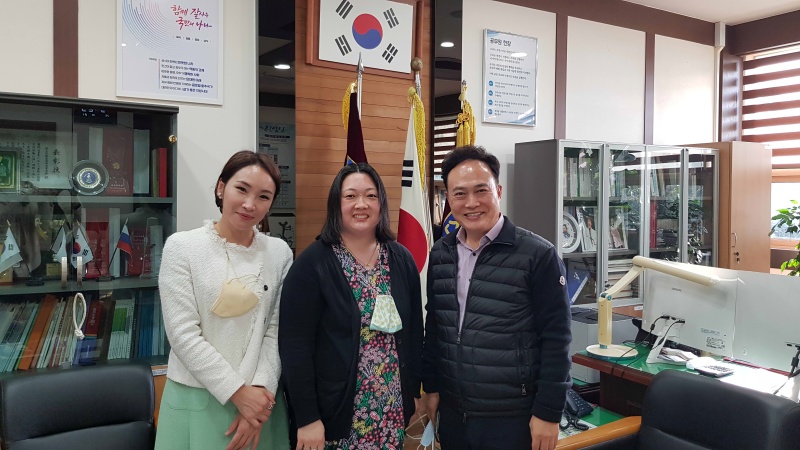
From left, Kim Hee-young, myself and principal Wang Gi-cheol
As well as being school principal, Wang is also a pansori master. He started his career when he was sixteen years old, studying alongside master singers such as Jeong Geum-jin, Kim So-hee and Jo Sang-hyeon. In 2002, Wang received the grand prize in the pansori category at the KBS Gugak Awards. He says that he loves making music that touches people’s hearts. “Music is the language of happiness. It brings happiness to those who embrace it. I think it is meaningful to show what our culture is through music.” Wang hopes that students at the school will be able to nurture their love of culture and the arts. He also wishes to share the Hallyu spirit around the world for many more years to come.
kalhong617@korea.kr
*This article is written by a Korea.net Honorary Reporter. Our group of Honorary Reporters are from all around the world, and they share with Korea.net their love and passion for all things Korean.